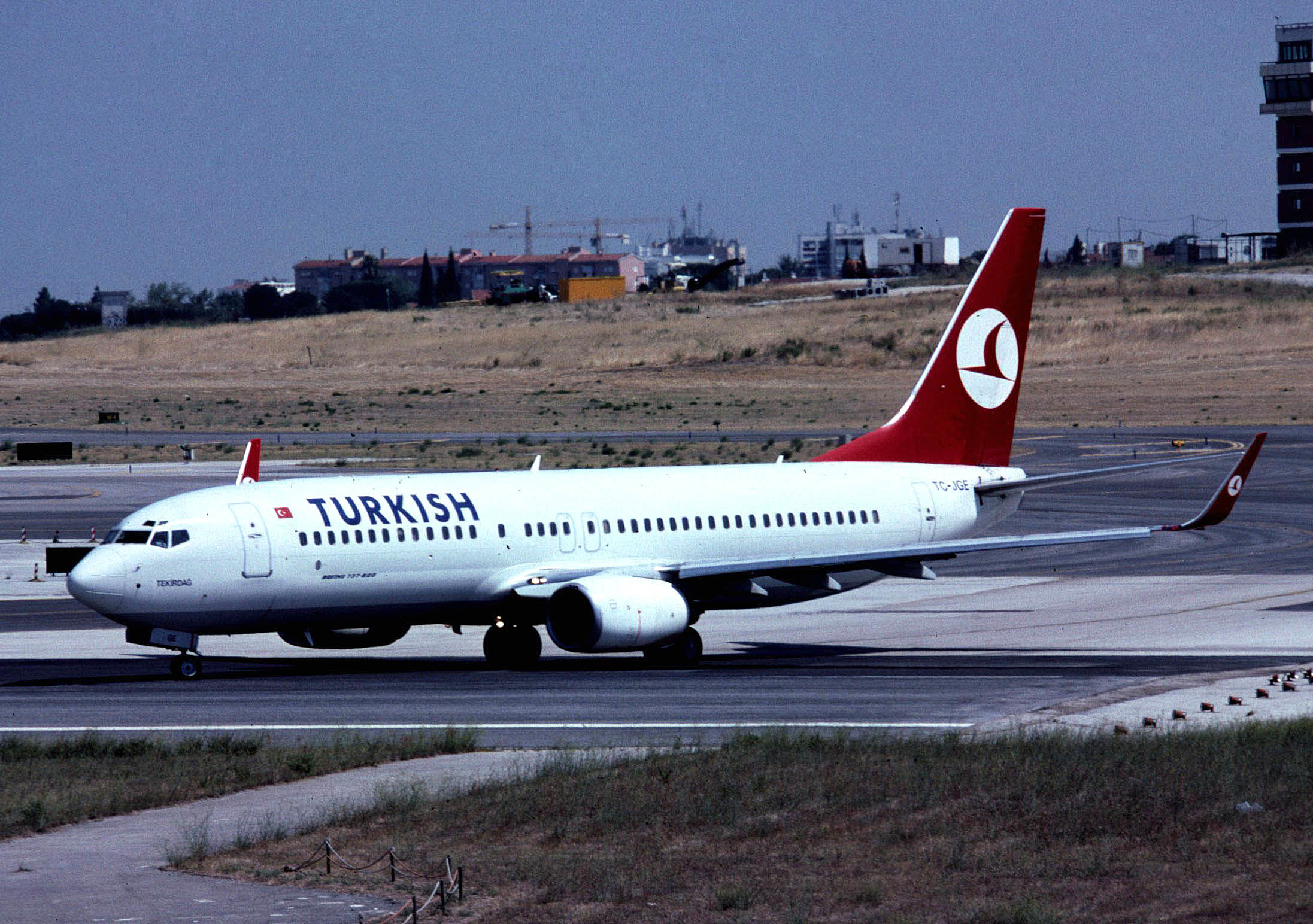The Flight
Model: B737-800
Registration Marks: TC-JGE
Name: Tekirdağ
Year of Manufacture: 2002
Engines: 2 CFM-53-7B26 Turbofans
Capacity: 165 Passengers

(Image embedded from worldairlinenews.com, on 25 September 2009)
Synopsis
On 25 February, 2009 TK 1951 crashed during landing 1.5 km north of runway 18R at Amsterdam Schiphol Airport at 11.30am (local time in Turkey). The flight departed Istanbul Atatürk International Airport with 128 passengers and 7 crew members on board. Upon impact, the airplane broke into 3 pieces. Nine people were killed and 86 were injured.
According to a preliminary report by the Dutch Safety Board, the crash was caused by a faulty left radio altimeter. At about 2000 ft above ground, the readings of this altimeter suddenly changed from 1950 feet to -8 feet and remained at that value until impact. As the information was erroneous, the computers registered that the aircraft was about to touch down. During approach and landing, the auto throttle system uses information from the left radio altimeter to position the throttles levers to obtain the desired power setting in the engines. In this flight, the throttles were set to idle which means that the engines were not producing any thrust. As a result the airplane lost speed and stalled.
In addition, it triggered aural warnings in the Ground Proximity Warning System. However the actual cause of the warnings and how the pilots reacted to them is still being determined.
Accident Videos
1. The Crash
(Video embedded from YouTube on 26 September 2009)
2. In the Cabin
(Video embedded from YouTube on 26 September 2009)
Radio Altimeters (RAD ALT)
Radio altimeters are also known as radar altimeters or Low Range Radio Altimeters (LRRA). Radio altimeters measure absolute altitude; that is the vertical distance of the aircraft above the terrain over which it flies. It furnishes pilots with height information Above Ground level (AGL) during take-off and landing. As its name implies, it is only used at heights of up to 2500 ft. The radio altimeter measures this continuously and directly.
The Basic Components

Radio Altimeter Indicator (Image embedded from navfltsm.com on 30 September 2009)
:
:

Antenna (Image embedded from amtonline.com 30 September 2009)
:
:

Transciever (Reciever and Transmitter)
(Image embedded from seaerospace.com on 30 September 2009)
Basic Operations
Radio altimeters use a frequency modulated system. The reciever-transmitter (RT) sends a signal to the transmit antenna which travels to the ground and is reflected back to the aircraft. Circuits in the RT unit compares the time difference between the transmitted and recieved signals. The difference is displayed as height above ground in the indicators.

(Image embedded from circuitgeek.com on 30 September 2009)
Output frrom radio altimeters are also fed into other components and systemsinterfaced with it such as autopilots and ground proximity warning system. The reliability of interconnected systems are affected by faulty operation of the radio altimeter. It is therefore important that radio altimeters are serviced and calibrated properly.
After the Crash
Boeing issued a Multi-Operator Message (MOM 09-0063-01B), after the Dutch investigators released their preliminary findings. The MOM advised all operators of the B737s and Boeing Business Jets (BBJs) to monitor their primary flight instruments and not to use theautopilot/throttle systems when approach and landing in events of radio altimeter failure. The MOM cover all B737 series from -100 to -900.
Since the same altimeter failed twide before the last 25 hours, investigators raised on why no action have been taken after the problem was detected.
After the interim report was released, Dutch and international press cited pilot unawareness as the cause but Turkish news insisted that there are other causes. As this is a recent accident, investigations are still underway.
References
1. Turkish Airlines. (2009). Special Issues. Retrieved from http://www.thy.com/SpecialIssuesEN/index.aspx, on 25 September 2009.
2. Dutch Safety Board. (2009). Preliminary Report. Retrieved from http://74.125.155.132/search?q=cache:u8wVEP4JnMgJ:henrimarnetcornus.20minutes-blogs.fr/media/00/02/1368481252.pdf+DUTCH+SAFETY+BOARD+PRELIMINARY+REPORT&cd=6&hl=en&ct=clnk&gl=nz on 23 Sep 2009.
3. Pacific Avionics and Instruments. (2009). Radio Altimeters. Retrieved from http://www.pacificavionics.com/viewPage.php?pgID=84, on 29 September 2009.
4. Aviation Week. (2009). Boeing warns of possible 737 altimeter fault.Retrieved from http://www.aviationweek.com/aw/generic/story_channel.jsp?channel=comm&id=news/ALT030509.xml, on 29 September 2009.
Want to know more?
http://en.wikipedia.org/wiki/TK1951 : More information on wikipedia
http://www.tpub.com/content/aviationandaccessories/TM-55-1510-222-10/css/TM-55-1510-222-10_134.htm: More about radio altimeters.









